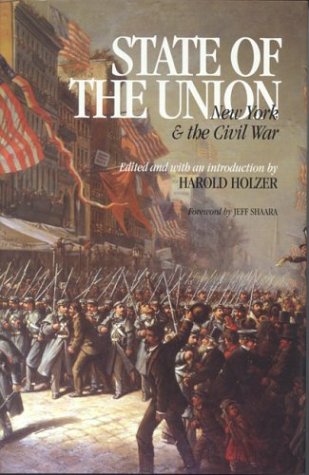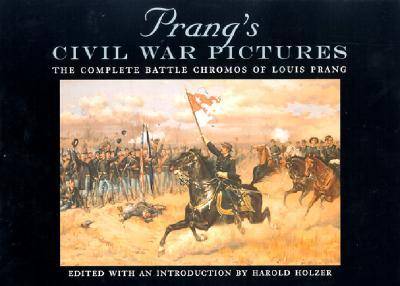The North's Civil War
2 total works
Three years ago, in celebration of the publication of The Union Preserved: A Guide to the Civil War Records in the New York State Archives, the New York State Archives Partnership Trust, a program of the New York State Education Department, held a two-day symposium featuring research by leading scholars on New York's role in the Civil War. The symposium brought together a broad spectrum of attendees from the Lincoln Forum, Civil War re-enactors, Civil War Roundtable members, students, local historians, educators, and history enthusiasts.
As the most populous state at the time of the Civil War, New York was central to winning the war. The state not only provided the most men and materiel, but was also the North's economic center as well as an important center of political and social activism. Inhabited by increasing numbers of immigrant groups, abolitionists, and an emerging free black community, New York's social and political environment was a microcosm of the larger social and political conflict being played out in the war. The symposium addressed these tensions by examining the role of women, blacks, Native Americans, and European immigrant groups in New York, particularly the various perspectives held by members of each group regarding the war effort.
The symposium examined the difficulties Abraham Lincoln faced in keeping New York favorable to his policies. It revealed the tremendous sacrifice New York made in the military campaign, as well as the treatment of Confederate soldiers at New York's Elmira Prison Camp. The State of the Union is a compilation of the papers presented at the symposium.
The essays included in the volume:
Housekeeping on Its Own Terms: Abraham Lincoln in New York, by Harold Holzer
The Volcano Under the City: The Significance of Draft Rioting in New York City and State, July 1863, by Iver Bernstein
What's Gender Got to Do With It? New York in the Age of the Civil War, by Lillian Serece Williams
In the Shadow of American Indian Removal: The Iroquois in the Civil War, by Laurance M. Hauptman
Above the Law: Abitrary Arrest, Habeas Corpus, and the Freedom of the Press in New York, by Joseph M. Bellacosa and Frank J. Williams
New York's "Andersonville:" The Elmira Military Prison, by Lonnie R. Speer
The Continuing Conflict: New York and the Impeachment of Andrew Johnson, by Hans Trefousse
During the 1880s, a German-born, Boston-based picture publisher successfully commissioned the most ambitious series of battle prints ever published. Louis Prang, best known as the "father of the Christmas card," hired noted military and marine artists to create original scenes of combat, and then reproduced their works in a wildly popular portfolio of chromolithographs. He called the set Prang's War Pictures.
They were offered to an eager public accompanied by "descriptive texts" that told the story of each engagement through eyewitness recollection by the heroes of each action. The set proved both appealing and influential, selling vigorously in various editions for a generation, and elevating the stature of military illustration in America. For 20 years, Civil War prints for the masses had featured uninspired, one-dimensional views of armies in hand-to-hand combat.Prang and his artists demonstrated genuine skill and imaginative perspective. They showed both real carnage and important technological advances, revealing both the broad sweep of panoramic battlefields and the intimate action of individual combatants.
These famously sepia-toned chromos went on to become familiar illustrations in books and magazines-often offered as definitive examples of Civil War art. But until now, the complete set of 18 chromos has never been collected in a single volume. And the original "Descriptive Texts" first offered Prang's customers as marketing brochures to boost sales-a priceless historical archive in and of themselves-have never been published since, anywhere.Holzer reunites pictures and texts in an authoritative, milestone volume orchestrating prints and descriptions that resurrect Prang's original conception of battle art for the masses for a new generation.
The book also features reproductions of the original works of art that inspired the prints, created on commission by battle painter Thure de Thulstrup and naval specialist Julian Oliver Davidson-now housed in art collections around the country-but seldom seen since they were commissioned by Prang as models for his ambitious chromolithographs.
This long-needed complete Prang portfolio will undoubtedly become an essential collectible for Civil War aficionados in the country, as well as for libraries and university collections increasingly aware of the importance of art and iconography in defining the Civil War experience and the impact of Civil War memory.

